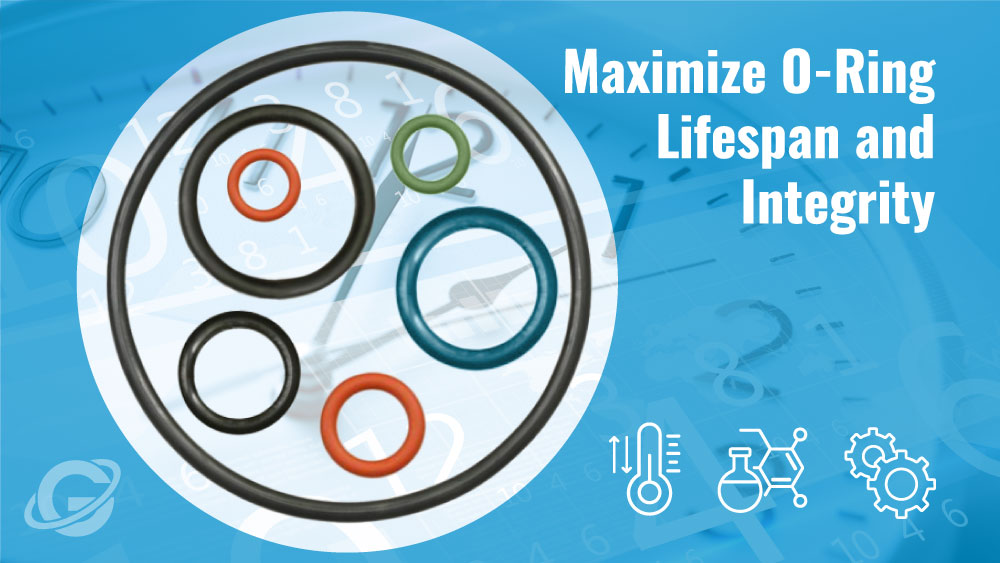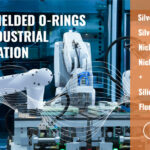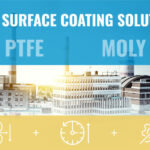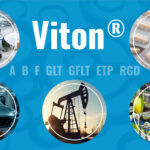
Summary
- Industrial seals and o-rings are essential for machinery efficiency, with lifespan and durability influenced by material choice, environmental conditions, and operational factors.
- The selection of seals and o-rings requires careful consideration of temperature extremes, chemical exposure, and mechanical stresses to ensure optimal performance and system integrity.
- Proper maintenance and regular inspection of seals and o-rings are crucial, involving assessment of physical wear and alignment with application-specific requirements for longevity.
Introduction
In industrial applications, the reliability and efficiency of machinery and systems heavily depend on the integrity of their components, with seals and o-rings to ensure the smooth operation of equipment, prevent leaks, and maintain pressure. Understanding the various factors that impact the lifespan and durability of seals and o-rings allows for prolonged o-ring service life, optimized performance, and system safety.
Understanding Seal Lifespan
O-Ring lifespan refers to the length of time an o-ring effectively maintains its sealing integrity under specified operational conditions. Sealing integrity involves maintaining shape, material properties, and ability to prevent leaks while withstanding various stresses. Noticeable wear, deformation, or failure typically signals the end of the seal’s lifespan.
The lifespan of seals and o-rings can vary widely based on the materials used. For instance:
- Buna (Nitrile) seals are known for their resistance to oils and are common in automotive applications. Their typical lifespan can range from 5 to 10 years, depending on the operational environment.
- Viton (FKM)®, known for its high heat resistance, can last over a decade in applications involving high temperatures.
- Silicone seals, popular for their flexibility and temperature resistance, can last over 10 years in the right conditions.
- EPDM is often chosen for outdoor applications due to its resistance to weathering and can have a lifespan exceeding 10 years.
- Teflon and AFLAS®, known for their exceptional chemical resistance, can vary.
Selecting the appropriate material for a seal or o-ring is a critical decision that significantly influences its lifespan. The unique demands of the intended application should guide this choice. For instance, the operational temperature range is a decisive factor; materials must endure the specific thermal conditions they will encounter, whether extreme highs or lows. Similarly, chemical resistance is paramount if the seals will be in contact with aggressive substances. Additionally, the material must be capable of withstanding the operational pressure of the application without deforming or losing integrity. Therefore, thoroughly understanding the application’s environment and requirements is essential for choosing the most suitable material for any seal or o-ring.
The lifespan of seals and o-rings is also significantly impacted by various operational factors. Mechanical wear, which occurs due to friction and repetitive motion, can gradually diminish the material’s effectiveness. Seals are also subject to pressure fluctuations, which can exert stress and potentially alter their shape or structure over time. Environmental exposure is another critical factor; elements like UV light, ozone, and extreme weather conditions can accelerate the degradation of certain materials. Moreover, seal installation plays a pivotal role; improper installation can lead to uneven wear, increased stress, and premature failure. Acknowledging and mitigating these factors is vital for maintaining the integrity and extending the lifespan of seals and o-rings in industrial applications.
Factors Influencing Durability
The durability of seals and o-rings is affected by an interplay of material composition, mechanical stress, chemical compatibility, and the specificities of their operational environments.
Material composition is a cornerstone in determining a seal’s durability. For example, Nitrile, a copolymer of butadiene and acrylonitrile, varies in acrylonitrile content, influencing its oil and fuel resistance. Higher acrylonitrile levels enhance chemical resistance but at the cost of flexibility. Conversely, Viton® (FKM), known for its high resistance to heat and chemicals, owes its robustness to fluorine atoms in its structure that protect the polymer’s carbon backbone. Silicone’s silicone-oxygen backbone impacts exceptional flexibility and temperature tolerance, whereas EPDM’s resistance to weathering, ozone, and UV radiation is due to its saturated polymer backbone. Matching these material properties with application demands is crucial for seal longevity.
Mechanical stress and operational wear significantly affect seal integrity. In dynamic settings, repetitive motion and friction can wear down the seal material. The seal’s hardness and the mating surface’s roughness play a critical role in the extent of this wear. Additionally, seals may undergo compression set under constant mechanical stress, diminishing their ability to revert to their original shape, which is crucial for effective sealing.
Chemical compatibility is another pivotal factor. Different materials react variably to chemical exposures. For instance, Nitrile seals might swell and degrade in certain solvents, while Viton® offers superior chemical resistance. The resistance is influenced by temperature and the chemical’s concentration, with prolonged exposure potentially causing hardening, softening, swelling, or cracking.
Selecting the appropriate seal for specific mechanical and chemical environments is paramount. Understanding the operational conditions, including temperature, pressure, and chemical exposure, guide this selection. A misalignment between the seal material and its intended environment can hasten failure. For example, using a Nitrile seal in an application that involves high temperature and aggressive chemicals might lead to premature failure, whereas Viton® could be more suitable. The comparison highlights the necessity of thoroughly evaluating the operational environment to ensure the chosen seal material can endure the conditions, optimizing durability and performance.
Environmental Impact on Lifespan

A range of environmental factors profoundly influences the lifespan of seals and o-rings, each playing a significant role in determining their effectiveness and longevity. Understanding how these factors interact with seal materials is crucial for making informed choices in their selection and application.
Temperature extremes have a profound impact on seal materials. High temperatures can lead to thermal expansion and accelerate aging in materials like Nitrile, resulting in a loss of elasticity and increased risk of cracking. On the other end of the spectrum, low temperatures can cause materials to shrink and become brittle, particularly affecting those that lack flexibility. Materials such as Viton® and Silicone are often chosen for their stability in high-temperature environments, while EPDM performs better in colder conditions due to its ability to maintain flexibility.
Pressure variances are equally challenging for seal durability. Under high pressure, the risk of extrusion and deformation increases, especially if the material isn’t resilient enough or the design doesn’t support the pressure range. The material’s hardness and the seal’s design are critical in ensuring the seal can withstand varying pressure levels without losing integrity.
Exposure to corrosive elements is another critical factor. Chemical interactions can vary from causing material swelling to complete degradation. For example, seals in environments with aggressive acids or solvents need materials like Viton® or Teflon for their chemical resistance. The severity of the impact also depends on the chemical’s concentration and exposure duration. Selecting a material that withstands these chemical environments and retains its properties over time is essential.
Lastly, atmospheric conditions such as humidity, ozone, UV light, and air pollutants significantly affect seal materials. High humidity levels can lead to moisture absorption, causing swelling and altering physical properties, which is particularly problematic in precision applications. Additionally, ozone and UV light can accelerate aging in certain materials, necessitating materials like EPDM for outdoor applications due to their excellent resistance to these conditions.
Maintenance and Inspection

Regularly maintaining and inspecting seals and o-rings is critical for extending their life and ensuring operational efficiency. Over time, these components may experience wear and degradation due to mechanical stress, chemical exposure, and environmental conditions. Routine maintenance facilitates early detection and correction of issues, maintaining optimal function and indicating when a material replacement is more suitable.
An effective inspection thoroughly examines the physical state and performance of seals and o-rings. Inspectors should look for signs of physical wear, such as cracking, tearing, or deformation. Additionally, assessing the seal’s elasticity and ability to maintain shape under pressure is essential, as a loss of elasticity can indicate material degradation. Wear patterns can offer insights into potential system misalignments or uneven pressures for dynamic seals.
Different seal types and materials show varying signs of wear and tear. Nitrile seals, for instance, might exhibit swelling or hardening when exposed to certain chemicals, while Silicone seals could become brittle under extreme temperatures. Viton® seals, used in high-temperature environments, may show signs of thermal degradation like cracking or charring. Recognizing these physical changes is vital in assessing the condition of the seals.
The frequency and type of maintenance required depend on the application of the seals. Seals in high-pressure or high-temperature environments might require less rigorous schedules. The maintenance plan should customized to each application’s specific conditions and demands, ensuring the seals remain in prime condition. This requirement involves setting regular inspection and replacement intervals based on the operational environment, material type, and historical performance data.
Shorter intervals between inspections are prudent in dynamic systems with constant motion and varying pressures. In a more static environment, longer intervals might suffice. Furthermore, in settings with aggressive chemical exposure or extreme temperatures, frequent monitoring is necessary to check for chemical degradation or thermal wear. The maintenance schedule should also incorporate the manufacturer’s recommendations, historical data or similar seal performance, and industry-specific regulatory requirements.
Conclusion
By adopting a holistic approach that considers material properties, environmental exposures, and operational demands, industry professionals can significantly enhance the resilience and efficacy of o-rings. Ultimately, the key to maximizing the lifespan of seals and o-rings is recognizing their critical role in the broader context of system functionality and adopting a proactive stance toward their care and maintenance. This approach ensures the smooth operation of industrial systems. It contributes to their safety, reliability, and cost-effectiveness, proving that attention to the small details can substantially improve overall performance.

 العربية
العربية  English
English  Español
Español  Français
Français  Português
Português  Deutsch
Deutsch  Italiano
Italiano  Русский
Русский  中文
中文  日本語
日本語  हिन्दी
हिन्दी 



